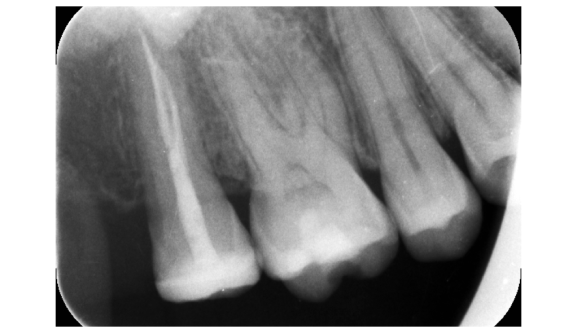Dr. Diego Saura Miñano
At present, the dental transplant is an effective and reliable solution to replace a lost tooth. This transplant is performed inside your own mouth, almost always using one of your wisdom teeth to replace another of your teeth, which is why it is technically called an auto-transplant.
At previous articles I was explaining this one to you novel technique, but I've been meaning to show you in pictures what it's all about... let's get to it!
Planning dental transplants

The planning is very important. Nowadays as much time is spent on treatment planning as on execution. Thanks to new technologies we can obtain 3D digital radiographs of patients using computed tomography, and to reproduce any part of the body in real size using a 3D printer.
Dental transplantation

On this occasion, we are going to transplant a wisdom tooth from the upper right (1.8), right into the position of the front tooth (1.7).

And here we see in the X-ray on the day of treatment how we have moved the tooth to its new position. Thanks to the 3D replica we made in the previous step, we have been able to adapt the space left by the damaged tooth so that the wisdom tooth fits perfectly. Even if there is still some gap around it (white arrows). shall be filled in in the following months.
Endodontics

A few weeks later, we need to root canalise the tooth we transplanted. This is always the case in adult patients. The reason is that when we transplant a tooth, the outer part heals, thanks to the cells surrounding the root, a tissue called periodontal ligament, which has the ability to repair and stimulate the formation of new bone.
On the other hand, the cells inside the tooth, colloquially called nerve, do not have this possibility of healing, and to avoid infections we have to root canalise the tooth. They are those white sticks that can be seen inside the roots. In this X-ray we can already see how the bone has filled in perfectly, this is the best sign that healing has taken place.
Inlay

Finally, we have to do an inlay. This treatment, which you probably don't know, is the modern version of an inlay. The main reason is because when we transplant a tooth, we have to leave it a bit hidden, so that it doesn't clash with the others, and so that it can heal quietly. But once it has healed, we want it to fit better with all the teeth around it, and with those it chews against. Sometimes it is not necessary to do the inlay, or we can simply reconstruct the transplanted tooth with a little filling.


